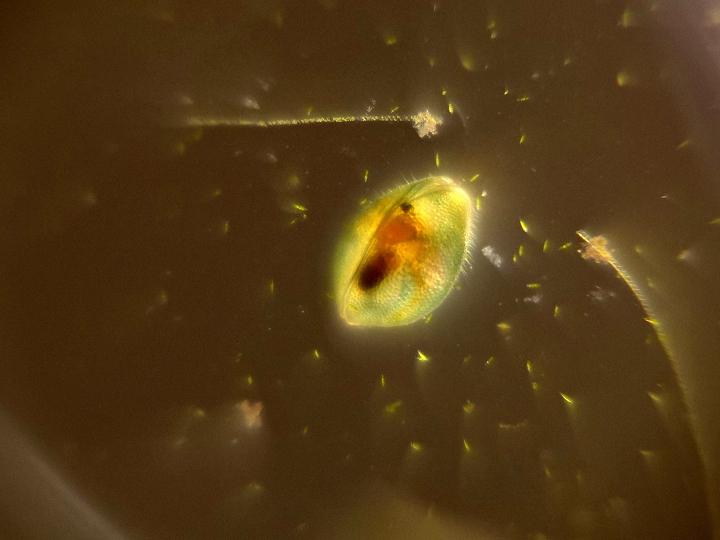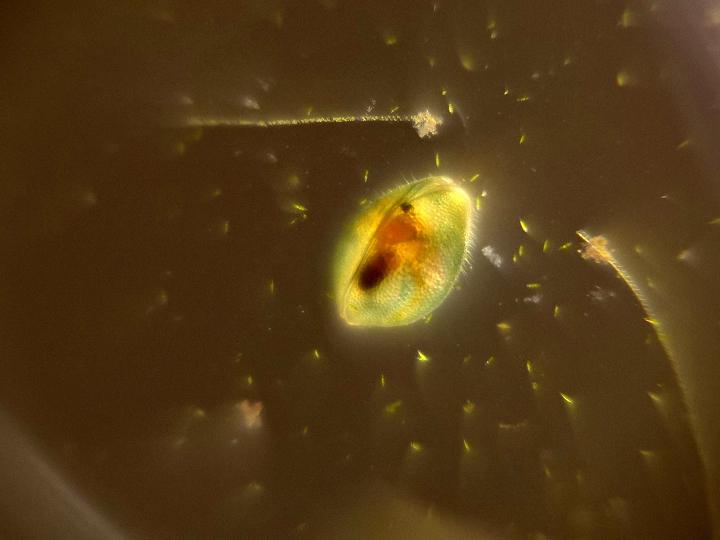
Credit: University of Houston
Ever wondered what's in the neighborhood pond? Technology developed by researchers at the University of Houston will allow you to test for waterborne pathogens by using your smartphone.
"The goal is to have citizens help to investigate and monitor water quality near where they live, while educating people about potential threats in environmental or drinking water," said Wei-Chuan Shih, associate professor of electrical and computer engineering at UH. "This type of citizen science is a priority for the National Science Foundation, to increase awareness of science and technology through individual participation."
Shih received a $100,000 grant from the NSF citizen science initiative to develop the technology, which builds upon an inexpensive lens his lab created last year, allowing people to turn their smartphones into microscopes.
"Almost everyone has a smartphone," he said. "Our goal is simple components that work with commercially available test kits, so people can order what they need to engage in this activity."
He and members of his lab created DotLens to produce and distribute the inkjet printed lenses, which attach directly to a smartphone camera lens. The researchers now are using 3-D printing to create an attachment that provides a narrow-band light source, which will allow people using commercial water testing kits to see and identify waterborne pathogens.
The attachment allows the user to control the light spectrum emitted, fine-tuning it to make different pathogens visible under magnification, said Yulung Sung, a doctoral candidate working in Shih's lab.
Shih said the system initially will test for two types of pathogen: Giardia lamblia and Cryptosporidium parvum, both of which can enter the body through the nose and mouth and cause intestinal infection. They can be serious – a 1993 outbreak of Cryptosporidium parvum in Milwaukee affected more than 400,000 people, according to a study by the U.S. Centers for Disease Control and Prevention.
Test kits are already available to allow people to detect pathogens in water, but without fluorescent microscopy – a microscopic technique that employ a narrow spectrum of light – those pathogens aren't visible, even under magnification. The kits target specific pathogens, and if those pathogens are present when exposed to the light, they become visible. If there are no pathogens in the water sample, there's nothing to see.
But most people don't have access to fluorescent microscopy. The DotLens and Shih's attachment serve as a low-cost alternative. The lenses sell for $12.99 and up; a price for the light source hasn't been set.
By changing the light spectrum, researchers – and nonscientists armed with the attachment and a smartphone – could use the same system for other water contaminants, including lead, Shih said.
Sung and Hoang Nguyen, who also is a PhD student working in Shih's lab, are currently testing the device on water samples collected from around the region in order to refine its performance and recording what they find. She said that two undergraduates, Fernando Campa from the University of Texas at Arlington and Kelly O'Shaughnessy from the University of Cincinnati, worked as the lab's first "citizen-scientists" over the summer under a NSF Research Experiences for Undergraduates grant.
Ultimately, Shih said he envisions an online map to be drawn collaboratively with citizen scientists, posting and sharing their findings.
"This is like completing a puzzle with a community of citizen scientists who share similar interests," he said.
###
Media Contact
Jeannie Kever
[email protected]
713-743-0778
@UH_News
http://www.uh.edu/news-events





